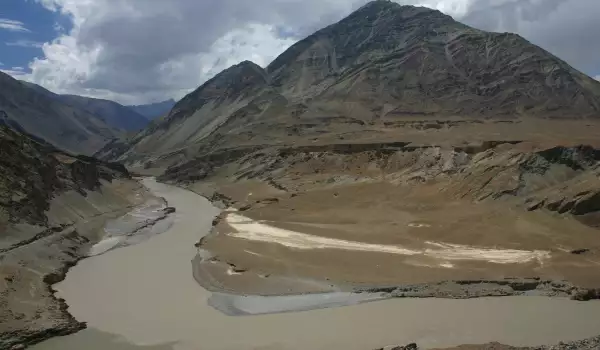Indus River

The Indus River is one of the longest rivers in the world. It reaches a length of 2900 km, with an average annual of 272 billion cubic meters, exceeding twice the annual flow of the longest river in the world - the Nile.
The Indus River flows starting from the southwestern part of Tibet and continues in the direction Northwest in the valleys of the Himalayas. After passing through the region of Kashmir, it goes to the northwest in India, then bears south to Pakistan.

In this area of the Punjab region the Indus River becomes deep, resulting in many tributaries such as the rivers, Jhelum, Chenab, Ravi, Beas and Sutlej. As a result, the Indus run more quietly and slowly. There is a huge importance of the Indus River for irrigation especially in the eponymous valley.
The main cities of the civilization of the valley of the Indus dates back to around 3300 BC. Along the river are found Paleolithic shelters that have been occupied sometime before 15, 000 years. They found stone tools, indicating that the region of the Indus was life-giving for our ancestors. As such, it is still celebrated to this day.
The river Indus is the most important River in Pakistan, but also the longest river in the country. It is a major source of drinking water in the country. The Indus River is fed mainly by snow and glaciers of the Himalayas.
The River Indus is a seasonal river resulting in that the depth of the water is different in different seasons. Lowest depth is in winter but during the months of July to September is at its peak.
River Indus determines the lives and livelihoods of around one million people in the territories through which it flows. The Mangrove forests, which it is accompanied is essential for fisheries, particularly in its delta. The Delta Indus River is one of the driest of the Indian subcontinent as a result of cyclones from the Arabian Sea.
A huge Negative of Indus is that it plays a significant role in deforestation, industrial pollution and global warming which all have an impact in the area of its delta, primarily on natural vegetation and the ecological balance of nature.
Along the Indus River were built 14 large dams - mainly for irrigation and electricity production, many of which are between India and Pakistan.
To govern this contract it was signed for the Indus Waters Treaty in 1960 between the two countries. Navigation of the River Indus is only possible in the area of the city Deraismailhan Delta, located 1200 km from the stream.















